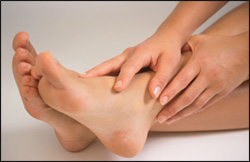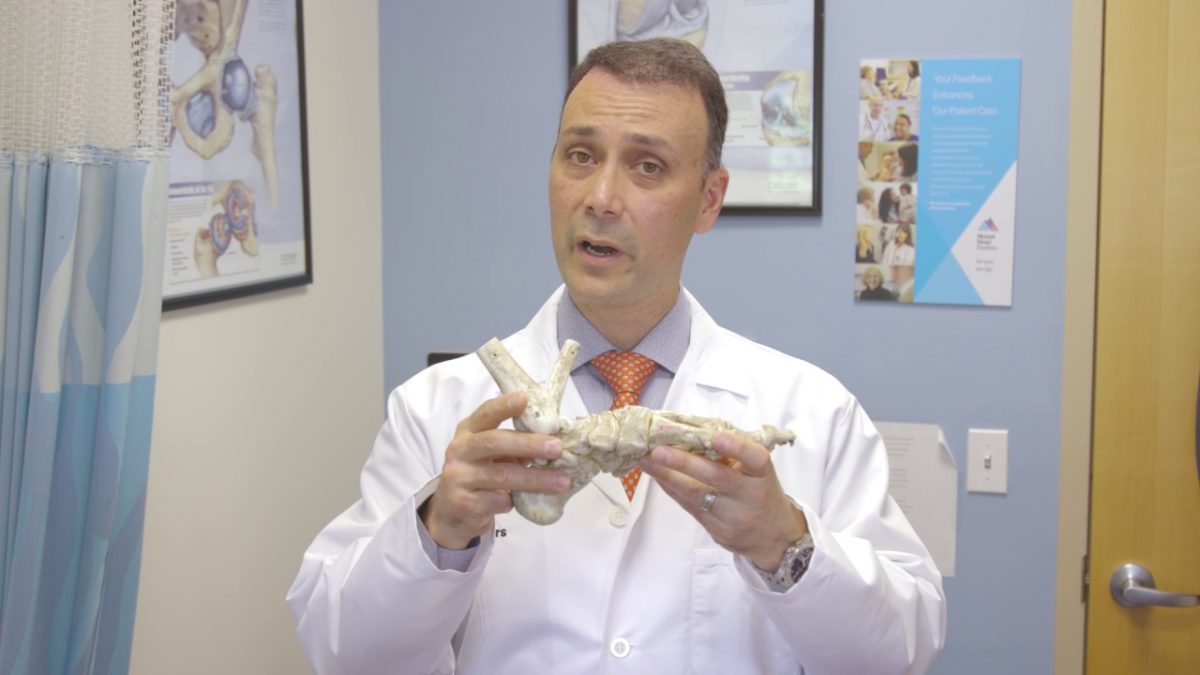Heel pain is one of the most common conditions that a lot of patients complain about. This condition can be caused by several factors. Plantar fasciitis is the most common cause of pain felt in the heel. This is also referred to as the heel spur syndrome if there is a presence of spur. This condition may also be caused by arthritis, tendonitis, nerve irritation, and stress fracture.
There are some rare cases that this condition may be caused by a cyst. Since this condition may occur due to several potential causes, it is essential that a proper diagnosis is reached. The best way to have the symptoms diagnosed correctly is to seek medical attention, specifically from a foot and ankle surgeon.
Heel Pain Caused by Plantar Fasciitis
 Heel pain that is caused by plantar fasciitis occurs when the band of tissue extending from the heel point to the tip of the toes becomes inflamed or swollen. This is the most common cause of pain felt in the heels. When this type of condition occurs, the tight tissue forming the arch of the foot is first irritated and will then result in inflammation.
Heel pain that is caused by plantar fasciitis occurs when the band of tissue extending from the heel point to the tip of the toes becomes inflamed or swollen. This is the most common cause of pain felt in the heels. When this type of condition occurs, the tight tissue forming the arch of the foot is first irritated and will then result in inflammation.
Plantar fasciitis is commonly caused by a faulty foot structure. Individuals who suffer from arch problems, specifically individuals who have high-arched feet or extreme flat feet are at a higher risk of developing and suffering from plantar fasciitis.
Plantar fasciitis can also result from using footwear that do not have ankle and arch supports on hard and flat surfaces. These types of footwear put a high amount of strain on the foot’s plantar fascia, thus, resulting in plantar fasciitis. This is most evident and noticeable in individuals who have a job that requires long hours of standing or walking around. Obesity also plays a major role in causing plantar fasciitis which results in heel pain.
Other Causes of Heel Pain
Heel spurs, stress fractures as well as Tarsal Tunnel Syndrome can also result in heel pain. A heel spur is a condition that is usually associated with the plantar fasciitis condition. This heel problem is most evident in patients who are suffering from long standing pain because of the irritation and inflammation of their plantar fascia.
The Tarsal Tunnel Syndrome results in the pinching or the entrapment of a large nerve located in the back of the foot, ultimately causing pain to be felt in the heels. Stress fractures, while causing heel problems, are rare situations. These are commonly seen in athletes such as runners.
Symptoms of Heel Pain
Since heel pain may be caused by several factors, it is important that you seek medical advice immediately to be able to reach a proper diagnosis. If you are not sure of what is causing the pain you are feeling in your heels or if you are unsure of the right treatment for your condition, you should already consult your doctor for any medical recommendations. There are several methods that can be used to treat this condition; however, these are specific to the cause of the heel problems. This is why it is essential that you seek guidance from a medical professional first to avoid aggravating your condition.
Symptoms of heel pain include the inability to comfortably walk on the affected heel. Pain that is felt during resting or at night is also a symptom of heel problems. Persisting pain in the heel area after several days is also a sign of heel conditions. Discoloration and swelling on the back of the foot, signs of infection such as warmth, redness, and fever are signals that you should already seek medical attention. If you are experiencing any other unusual indications, you should immediately consult a foot and ankle surgeon to avoid exacerbating your condition.
Treatments for Heel Pain
The right treatment for your heel pain will entirely depend on the root cause of your heel problems. This is why it is very important that you distinguish the causes of the symptoms you are experiencing before you proceed with any type of treatment program. Seeking medical advice to obtain proper diagnosis is essential to be able to come up with the right treatment program for your condition. While this condition may be resolved through several non-invasive or non-surgical treatments, this will still depend on the severity of the heel condition you are experiencing.
Non-surgical treatments for heel pain include resting. Avoiding precipitating activities such as taking a rest from long hours standing or walking around as well as taking a few days of from your usual jogging exercises may help your heel problems.
Simply resting your feet will help alleviate severe pains and will help cool down the inflammation of your heel. Applying ice packs will also help relieve some of the symptoms and reduce the pain you are feeling in the affected area of your foot. Ask your doctor if you can perform simple exercises such as stretching to relax the tissues surrounding your heel bone.
Medications for Heel Pain
There are also some medications that you can take for the heel pain you are suffering from. These medications include anti-inflammatory drugs. These drugs will help control and alleviate the pain you are feeling as well as decrease the swelling and the inflammation on your foot. While over-the-counter drugs are usually enough to treat heel pain, some people may require prescription drugs and injection therapies such as corticosteroid injections to relieve their pain and decrease the inflammation of the heel area.
